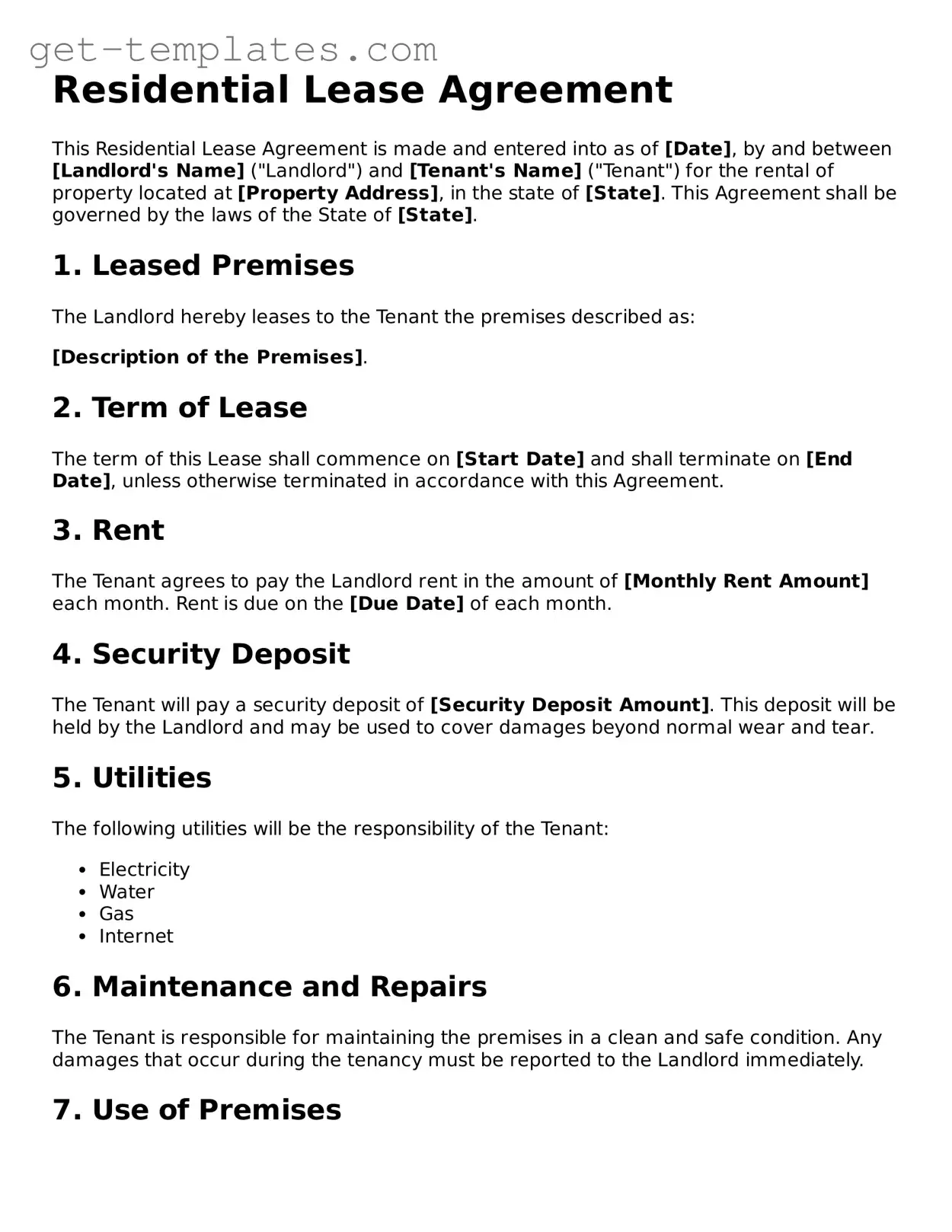Residential Lease Agreement
This Residential Lease Agreement is made and entered into as of [Date], by and between [Landlord's Name] ("Landlord") and [Tenant's Name] ("Tenant") for the rental of property located at [Property Address], in the state of [State]. This Agreement shall be governed by the laws of the State of [State].
1. Leased Premises
The Landlord hereby leases to the Tenant the premises described as:
[Description of the Premises].
2. Term of Lease
The term of this Lease shall commence on [Start Date] and shall terminate on [End Date], unless otherwise terminated in accordance with this Agreement.
3. Rent
The Tenant agrees to pay the Landlord rent in the amount of [Monthly Rent Amount] each month. Rent is due on the [Due Date] of each month.
4. Security Deposit
The Tenant will pay a security deposit of [Security Deposit Amount]. This deposit will be held by the Landlord and may be used to cover damages beyond normal wear and tear.
5. Utilities
The following utilities will be the responsibility of the Tenant:
- Electricity
- Water
- Gas
- Internet
6. Maintenance and Repairs
The Tenant is responsible for maintaining the premises in a clean and safe condition. Any damages that occur during the tenancy must be reported to the Landlord immediately.
7. Use of Premises
The Tenant will use the premises solely as a private residence and will not engage in any unlawful activities.
8. Termination
This Lease may be terminated by either party with written notice of [Notice Period] days.
9. Additional Terms
Any additional terms and conditions agreed upon by both parties shall be documented here:
[Additional Terms].
10. Signatures
The parties agree to the terms of this Lease by signing below:
Landlord: _________________________ Date: ________________
Tenant: _________________________ Date: ________________
By signing this Agreement, both parties acknowledge that they have read and understood its terms.
